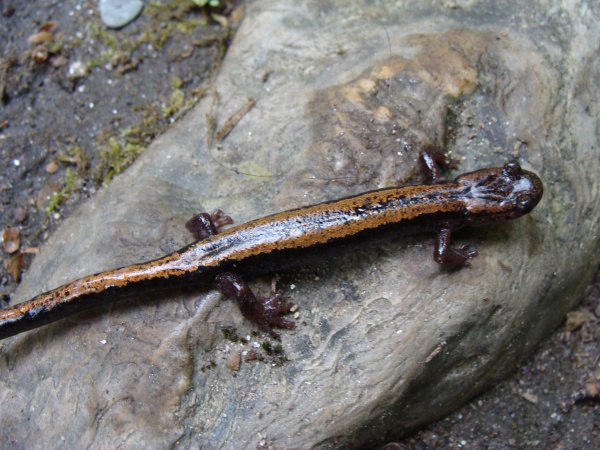Facts About Gold-striped salamander
The gold-striped salamander, also known as the golden-striped salamander, saramaganta, or píntega rabilonga, is a captivating amphibian of the Salamandridae family. It is the sole species within the genus Chioglossa, inhabiting the north-western region of the Iberian Peninsula, typically at elevations up to 1,300 meters.
This salamander is distinguished by its short legs, protruding eyes, and an exceptionally long tail, which constitutes around two-thirds of its total length. Its smooth dorsal surface features 10-11 costal grooves and ranges in color from dark brown to black, accented by two parallel golden stripes along its back, which may occasionally be discontinuous.
Notably, the gold-striped salamander is nocturnal and quite agile on land. When threatened, it has the remarkable ability to autotomize its tail, similar to certain lizards. These salamanders have a lifespan of approximately eight to ten years and primarily feed on invertebrates, capturing their prey with sticky tongues.
Reproduction occurs on land, where females lay clutches of 10-35 eggs in secure locations such as alongside running water or within caves. The larvae then develop in aquatic environments.
The preferred habitat of the gold-striped salamander consists of moist deciduous forests rich in undergrowth and mosses. They are often found hiding under stones near rocky streams or within caves. Unfortunately, these habitats are increasingly threatened by human activities, leading to significant habitat loss.
There are two recognized subspecies of the gold-striped salamander: C. l. lusitanica and C. l. longipes.

 Spain
Spain